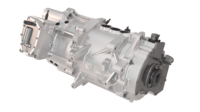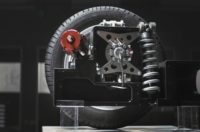ZARAGOZA, Spain—Engineers at the Technological Institute of Aragon (ITAINNOVA) here are coordinating a new European Union initiative to develop lightweight components for electric vehicles. The goal of LEVIS is to create multimaterial production technologies that include recyclable resins and bio-based carbon fiber composites.
Thirteen other organizations are involved in the two-year project, including Cenex Nederland, Marelli Suspension Systems and Steinbeis-Europa-Zentrum.
“[Because] electric vehicles are powered by batteries that often carry considerable weight, car manufacturers and suppliers must seek new lightweighting technologies to compensate for this excess weight in other car components,” says Agustín Chiminelli, scientific coordinator of the LEVIS project. “These technologies can directly contribute to improving vehicle efficiency in terms of kilowatt hours consumed per kilometer, as well as vehicle autonomy, and also reduce environmental impact.”
Chiminelli and his colleagues will be focusing on three different components: a cross beam, a suspension control arm, and a battery clamping and packing system.
"We will use multimaterial solutions based on thermoplastic carbon-fiber compounds integrated with metals, which will be produced through a set of profitable and scalable manufacturing technologies," explains Chiminelli. “Thanks to their excellent mechanical properties, these composites, properly combined with metals, are ideal for light applications.
“LEVIS aims to develop [new technology] for these multimaterial components based on resins and environmentally friendly reinforcement systems, cost-effective manufacturing processes, optimized joints, advanced simulation methodologies and structural integrity monitoring technologies,” Chiminelli points out. “The combination of these developments will allow us to obtain lightweight components.”
“The new lightweight components will be developed using a circular approach,” adds Theodora Skordili, business development manager at Cenex Nederland. “This means that we will pay special attention to the use of recyclable materials and the design of the components so that, at the end of the useful life of the components, nothing will be wasted and each part can be recycled or reused for the same component or for others. The useful life of these components will be optimized, and they will be designed to allow a simple and efficient disassembly and reuse.”



